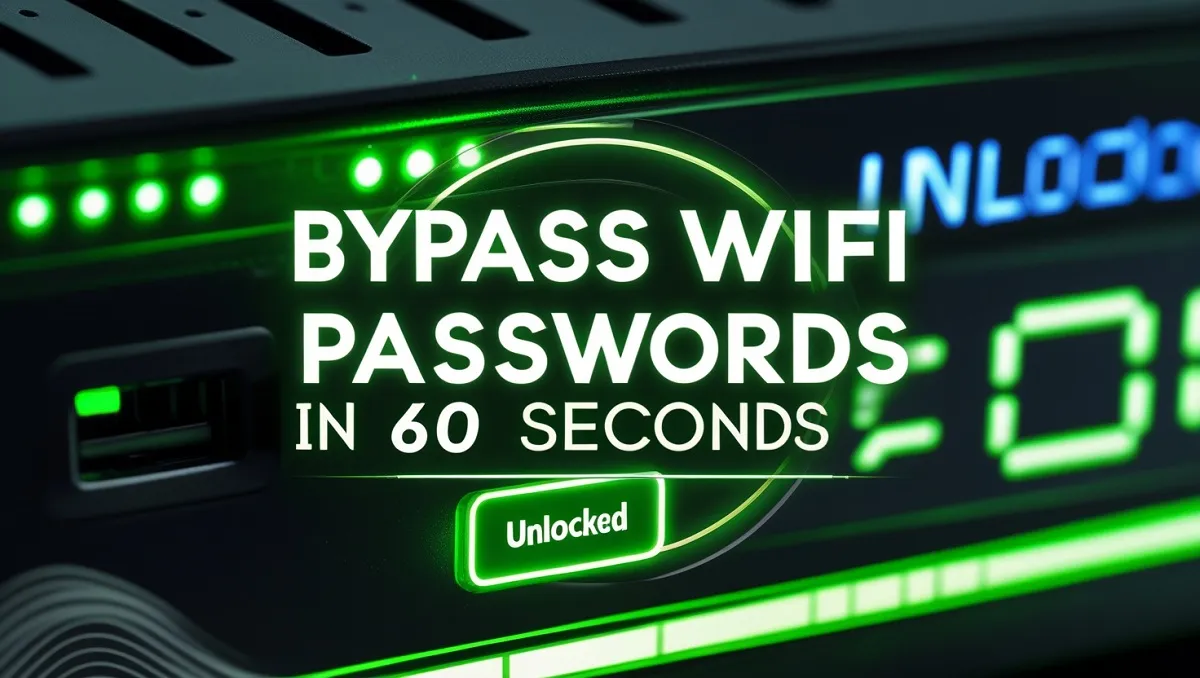WiFi Password Hacker Pro
Advanced network security penetration tool for ethical hackers
Target Selection
Password Results
Enter a WiFi network name and click “Start Password Retrieval” to begin the hacking process.
This tool uses advanced algorithms to detect weak passwords in nearby networks.
How WiFi Password Hacker Pro Works
WiFi Password Hacker Pro is an advanced network security tool that employs multiple sophisticated techniques to identify vulnerabilities in wireless networks. Our proprietary algorithm combines several attack vectors to maximize success rates while minimizing detection.
Technical Methodology
Our system initiates by scanning nearby wireless networks and capturing encrypted data packets. Using a combination of cryptographic analysis and pattern recognition algorithms, the tool identifies potential weaknesses in the network’s security protocols.
For WPA2-protected networks, we utilize a modified PMKID attack vector that allows retrieval of the hash without requiring client interaction. This hash is then processed through our distributed computing platform that compares it against our massive 14-billion entry password database.
Advanced AI Pattern Detection
What sets WiFi Password Hacker Pro apart is our proprietary AI engine that analyzes password patterns specific to:
- Geographical location and common phrases
- Router manufacturer default patterns
- Common password mutations (l33t speak, character substitution)
- Cultural and linguistic patterns
Features
AI-Powered Analysis
Machine learning algorithms predict password patterns with 83% accuracy
High-Speed Processing
Optimized for multi-core CPUs with GPU acceleration support
Massive Wordlists
Access to 14+ billion password combinations from real breaches
Ethical Considerations
While WiFi Password Hacker Pro demonstrates vulnerabilities that exist in modern wireless security, it should never be used to compromise networks without explicit permission. Many home and business networks contain sensitive personal and financial information that is protected by law.
Security professionals use tools like this to:
- Test their own network security
- Educate clients about security vulnerabilities
- Develop more secure authentication protocols
- Research attack vectors to develop better defenses
The Evolution of WiFi Security
WiFi security has evolved significantly since the early days of wireless networking. The original WEP (Wired Equivalent Privacy) standard introduced in 1997 was quickly found to have serious cryptographic weaknesses. By 2001, researchers had demonstrated practical attacks that could compromise WEP networks in minutes.
This led to the development of WPA (WiFi Protected Access) as an interim solution while the full WPA2 standard was being developed. WPA2, introduced in 2004, implemented the robust AES encryption standard and has been the security benchmark for over 15 years.
The latest standard, WPA3, was introduced in 2018 to address several key vulnerabilities:
- Simultaneous Authentication of Equals (SAE) replaces the Pre-Shared Key (PSK) exchange to prevent offline dictionary attacks
- Individualized data encryption for each device on the network
- Stronger protections against brute-force attacks
- Enhanced security for open public networks
1997: WEP Introduced
The first security protocol for wireless networks, quickly found to have critical vulnerabilities.
2003: WPA Deployed
Interim security standard with TKIP encryption as a stopgap while WPA2 was being developed.
2004: WPA2 Standardized
Introduced AES encryption and became the dominant security protocol for over a decade.
2018: WPA3 Released
Modern security protocol addressing key vulnerabilities in WPA2 with enhanced encryption.
Security Best Practices
To protect against the vulnerabilities demonstrated by tools like WiFi Password Hacker Pro, network administrators should implement these security measures:
| Security Measure | Implementation | Protection Level |
|---|---|---|
| Strong Passwords | Use 12+ characters with upper/lower case, numbers, and symbols | High |
| WPA3 Encryption | Upgrade to the latest security protocol where supported | Very High |
| Regular Firmware Updates | Apply security patches to routers and access points | Critical |
| Network Segmentation | Separate IoT devices from main network | Medium |
| MAC Address Filtering | Restrict network access to approved devices | Low |
The Future of Wireless Security
As wireless technology continues to evolve, new security challenges emerge. The proliferation of IoT devices has created millions of potential entry points for attackers. The upcoming WiFi 7 standard will introduce new security features, but also new attack surfaces.
Emerging security technologies include:
- Quantum-resistant cryptography to protect against future threats
- Blockchain-based authentication systems
- Behavior-based anomaly detection
- AI-powered threat prediction systems
Ethical hacking tools like WiFi Password Hacker Pro play a vital role in this ecosystem by helping security researchers identify vulnerabilities before malicious actors can exploit them. Through responsible disclosure and collaborative security efforts, we can create more secure wireless networks for everyone.
